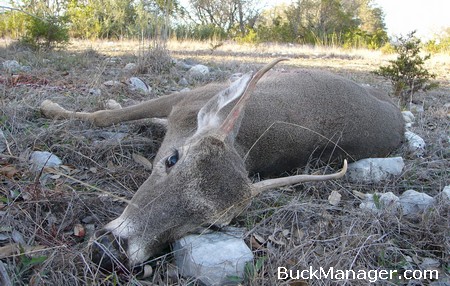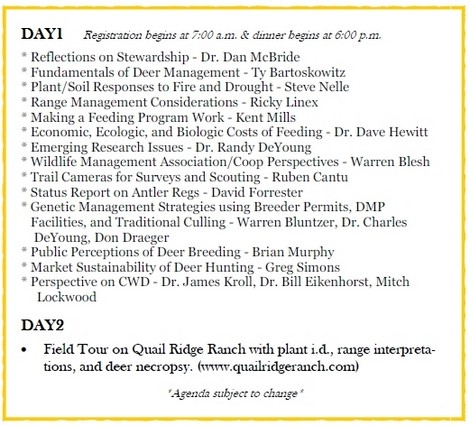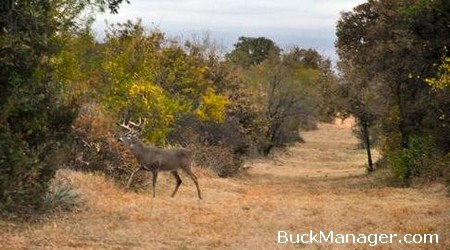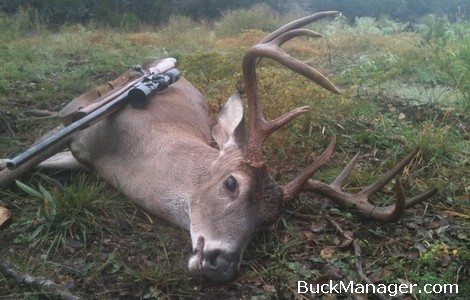Submitted Question: “I have some deer hunting questions. I hunt in Mississippi right off the Mississippi river. We have been on a deer management program for several years. The rules are, you must shoot a doe before taking a buck. If you shoot two doe then you can take two bucks. For a buck to meet the regulations, it must have 21 inch main beams and be 4 1/2 years of age or older. Our deer manager says we have too many doe, but a lot of the members are getting concerned. We see way more bucks that doe when we sit in our stands. Our trail cameras pics have also captured way more bucks on them as well, but our lactation rate is only 50 percent. Why is this and how can we get an accurate head count of our deer herd?”
Buck Manager: The answers to the questions that you have asked are critical pieces of information for any deer management initiative. In many cases, if a property manager can identify the both the buck to doe ratio as well as the reproductive (fawning) rate, then that gives the manager a real good picture of what is happening out on the ground. That being said, I’ll be the first to tell you that it’s virtually impossible to be spot-on with exact numbers when talking about a population of wild animals. However, there are various techniques available that can help you reliably estimate those all-important numbers.
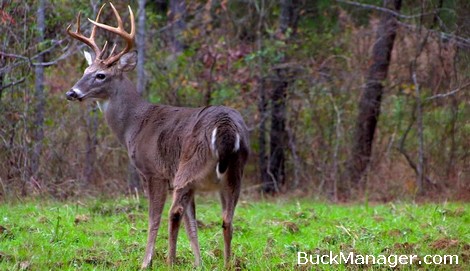
Deer Leases and Whitetail Management
Most lands that are leased for deer hunting will have some ability to be managed. Not all properties are created equal though — that is for sure. Larger tracts of land offer better management potential, especially when it comes to controlled harvest. Regardless of the amount of land you lease, the activities (grazing, forest cutting, farming, etc.) of the landowner will, at least at some point, have an impact on the deer herd. Surrounding lands and the management, non-management or mis-management of them will also impact the place that you hunt.
The impact of neighboring lands increases as lease size decreases, another reason size matters. When it comes to whitetail management on lands leased for deer hunting, properties less than a few hundred acres in size must focus even more on habitat management and providing high quality food sources. Habitat quality, in terms of food availability, will impact the body condition of breeding does as well as fawn survival once they hit the ground. A low lactation rate (number of lactating does harvested divided by the total number of does harvested) is typically caused by poor food availability as a result of habitat condition. An increase in deer harvest, habitat enhancement and/or supplemental feeding can help in this situation.
High predator numbers, particularly when combined with low quality fawning habitat, can also result in the appearance of a low lactation rate within doe population if fawns are consumed earlier in the year. Predators, specifically coyotes, are not generally a problem in areas that offer good deer habitat. If the fawning rate is extremely low then targeted predator control should be implemented to reduce added mortality.
Deer Survey Methods – Using Game Cameras
Deer surveys are a must when it comes to managing whitetail. There are several ways to estimate deer population numbers. Unfortunately, a single survey method can not address all of the unknowns. Game cameras were mentioned in the initial question above and, yes, they can be one of the techniques used to survey deer. However, cameras placed on feeders provide little useful information when it comes to estimating overall population parameters. Cameras placed at feeders or at feed stations will do an outstanding job of identifying bucks.
Game cameras are probably the best deer hunting and management tool to come along in recent years. Motion-activated game cameras can gather tons of deer sightings 24 hours a day, 7 days a week, and do it all remotely. Because of this, managers can get survey information on the deer herd without having to be out at the ranch or lease as much. They are real time savers. But like a lot of things, the results that one gets depends on how the work is done.
If game-camera-collected data is to be used to estimate the buck to doe ratio and/or fawning rate of a property the cameras must be placed away from feeders, either on trails or roadways or near water sources. Feeders are great places to see bucks. This is why hunters put them there. But competition (for food) at a feed station changes individual deer behavior. Many deer will avoid feeders because the larger, more dominant animals get the lion’s share of the feed. In most cases, the dominant deer will be bucks. Feeder photos can be used to assess antler quality in bucks, but should not be used solely for complete harvest management or population estimates.
In fact, hunters and managers will see even more bucks, at least on a percentage basis, during years in which habitat conditions are horrible. It’s not that there are more bucks out there, it’s just that more animals are searching for food. When the bucks move in, the does, and especially those with fawns, will shy away.
Camera surveys should be conducted starting four to six weeks before deer hunting season. Set cameras away from feeders to be triggered no less than 5 minutes apart then use these sightings to estimate the buck to doe ratio and fawn production on your land.
Buck Management by Age and Antler Quality
There are a lot of ideas floating around out there when it comes to managing buck harvest. Some are better than others. Many harvest buck harvest management strategies are just plain wrong. The way in which a property should address buck harvest will depend on the manager’s or hunters’ overall deer management goals. Shooting bucks that are at least 4 1/2 years old with at least 21 inch main beams is a good idea, but I would recommend simply shooting bucks that are at least 4 1/2 years old. If the goal is to get bucks to age 4 1/2 or older, then mission accomplished.
Placing the 21 inch main beam restriction on bucks 4 1/2 and older will ultimately end up protecting bucks that are lower quality (4 1/2 years old but less than 21 inch beams) than the deer you ultimately end up shooting, allowing smaller-antlered bucks to continue to sire and produce fawns in to the future. In addition, many hunters have a difficult enough time accurately aging deer on the hoof, so eliminating the beam length requirement would maintain buck age structure and eliminate the high-grading bucks that are 4 1/2 years old and older. Think about limiting hunters to one buck 4 1/2 years of age and older each year, but allowing them to use their second buck tag on another buck for management purposes (2 year old with 6 or less antler points, 3 year old with 7 or less antler points). Your camera photos will help you identify these deer, too.
